Covid in
Compostela
Lockdown cartographies: statistical data visualization during the Covid-19 in Santiago de Compostela.
2021 locationSantiago de Compostela, Galicia keywordsCity, Health, Housing, Inequality technologyData analysis and visualization, Cartography
Lockdown cartographies in Santiago de Compostela.
On March 15th, 2020, Spanish society began their confinement due to the Covid-19 pandemic. The shutdown was applied to the entire country and limited people’s movement and access to public spaces. This new scenario highlighted the urban inequalities that exist in our cities and the housing deficiencies of our homes. In addition, the confinement sparked a debate on the intersection between urban vulnerability and public health, and the importance of urbanism as a tool to achieve social integration in cities.
The following maps show the characteristics of the homes of the inhabitants of Santiago de Compostela during lockdown. This analysis has been mainly performed from the data published by the National Institute of Statistics based on the 2021 Population and Housing Census. I choose the census section as working scale in order to perform a homogeneous analysis with comparable results. In some specific cases, I use data obtained from Google Maps and real estate portals such as Fotocasa.
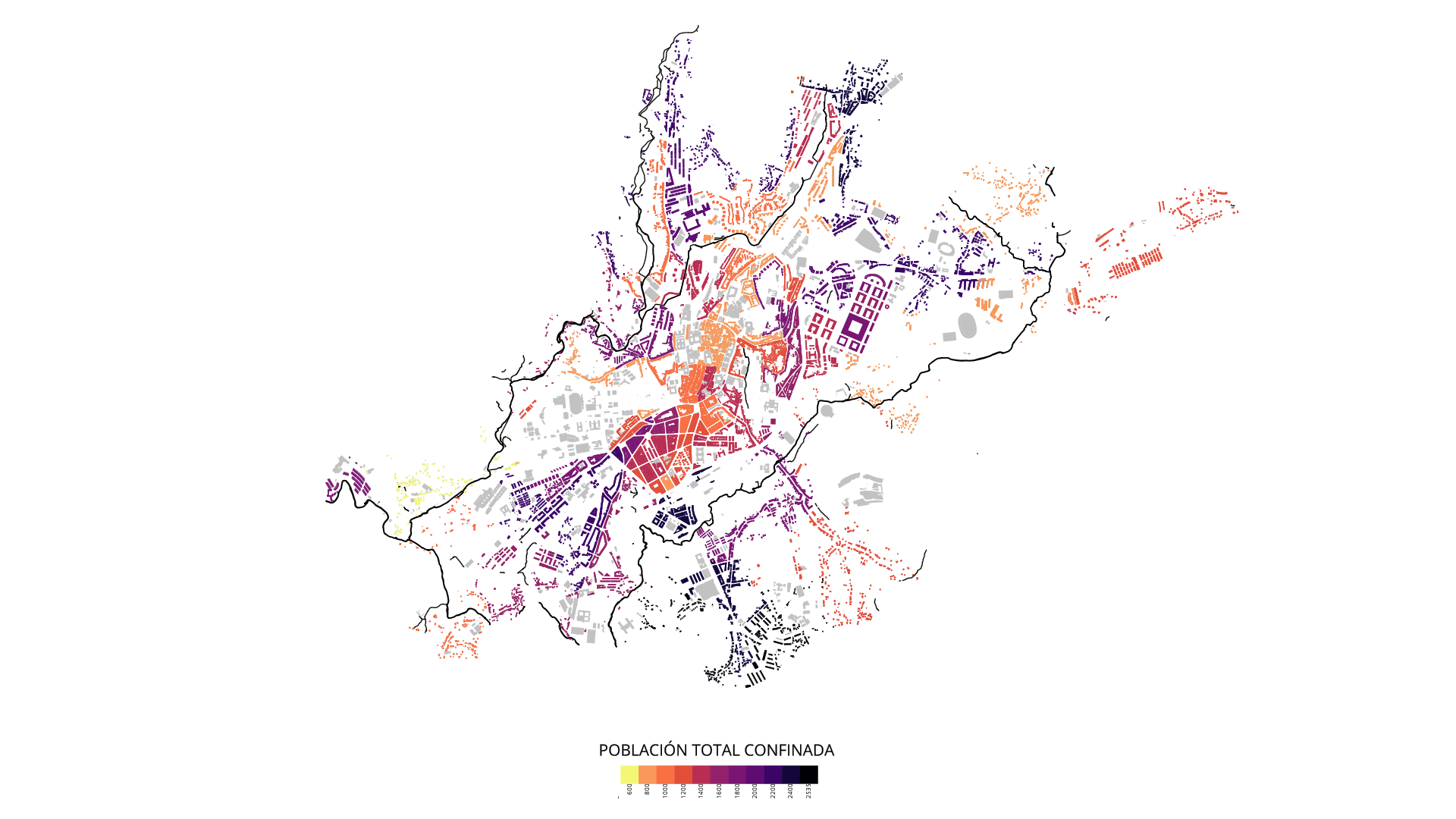

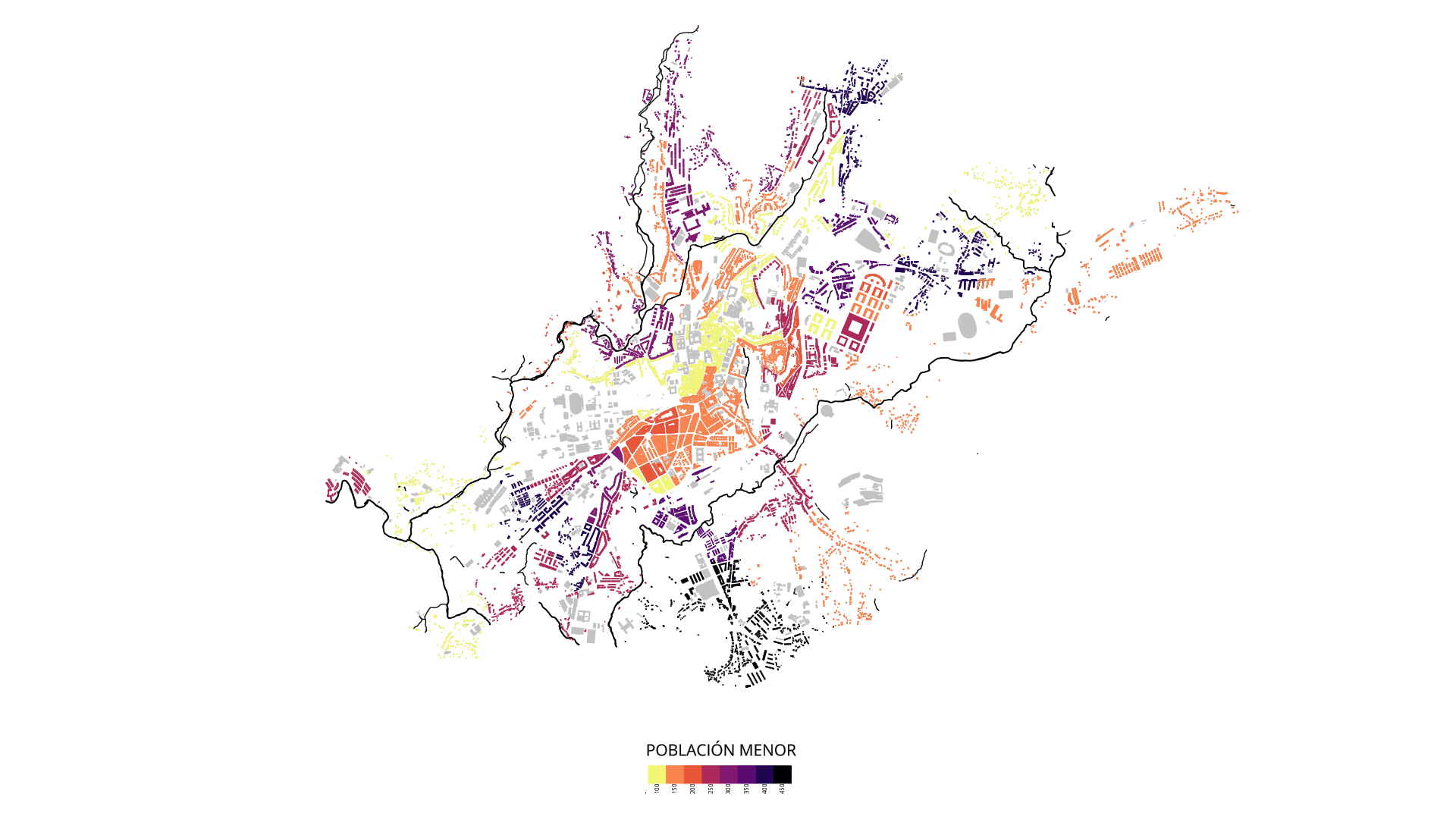

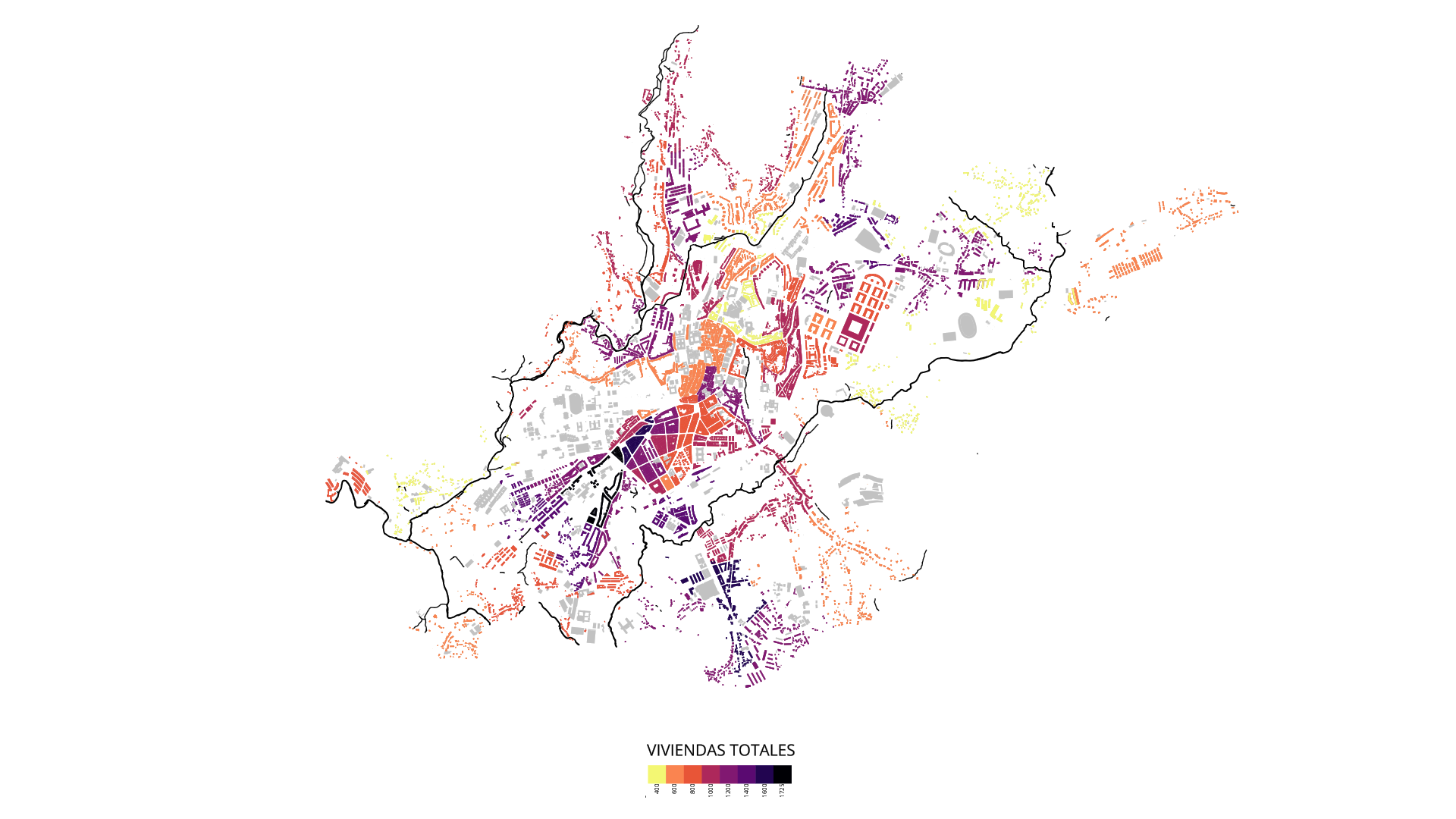
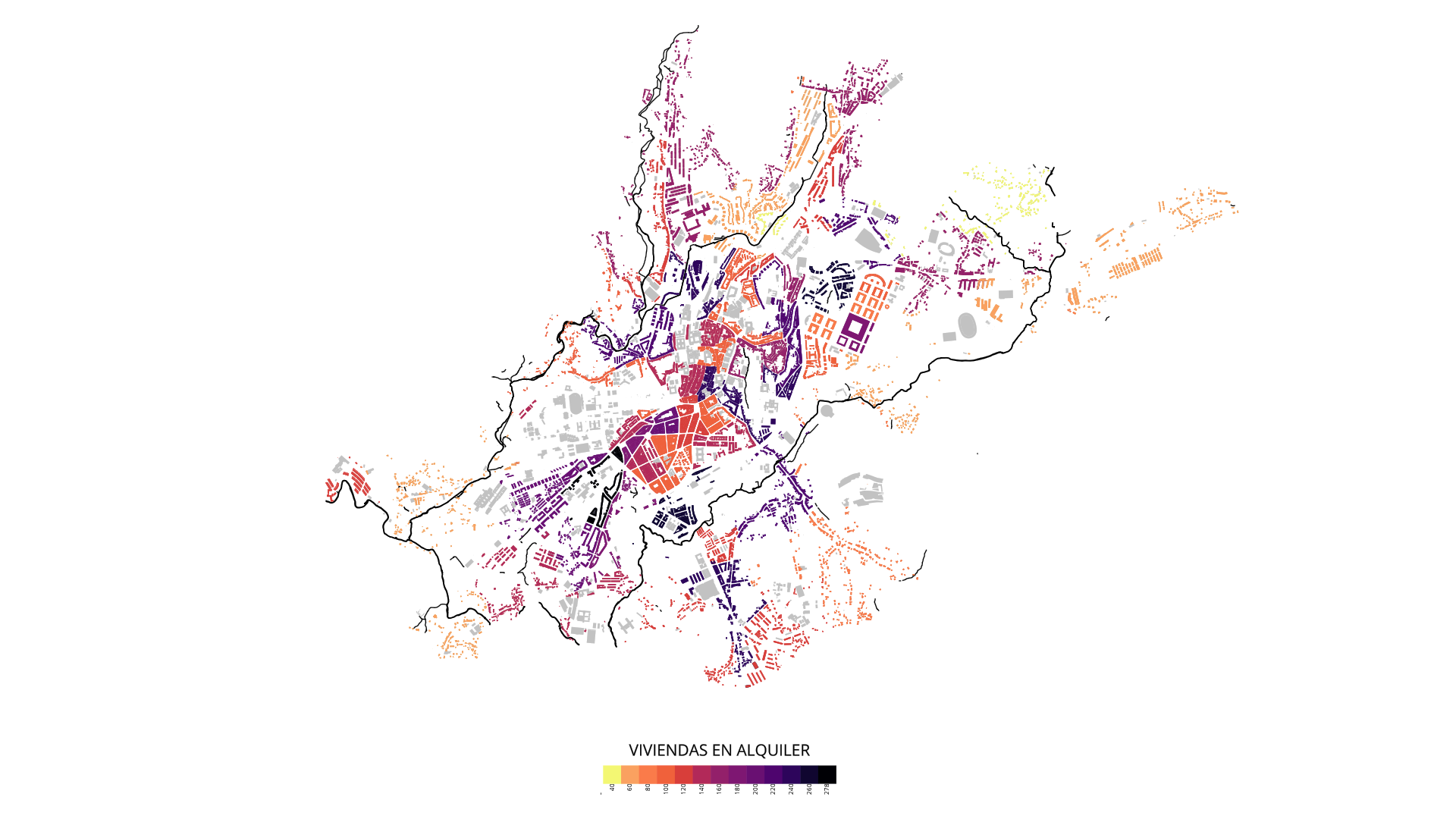
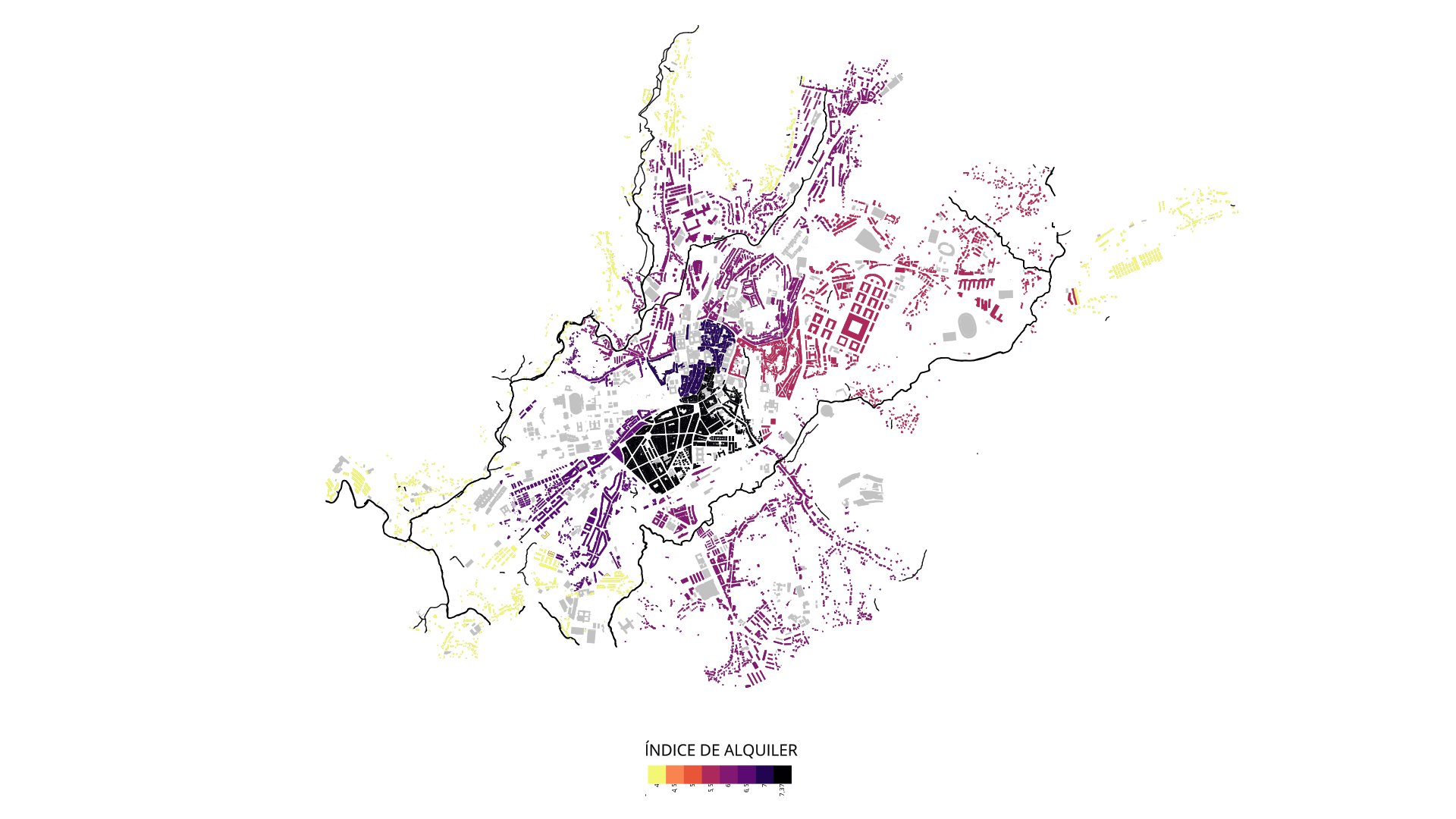
Lockdown cartographies in Santiago de Compostela.
Based on the cartographies of the confinement in Santiago de Compostela, inequalities are detected between the most central neighborhoods —Ensanche, Zona Vieja— and those more distant from oldtown. When the state of alarm was decreed, a total of 97.800 inhabitants were confined to their homes. 22,79% of these inhabitants were at-risk populations —concentrated in the Ensanche and Fontiñas— and 13,54% were minors —located in the new Ensanche Sur—. The total number of homes was 56.746, and 16,32% of these were rented with an average price of €5,50m2 per month. The highest rental rate is precisely in the Ensanche and Zona Vieja, the neighborhoods with the highest average income per household.